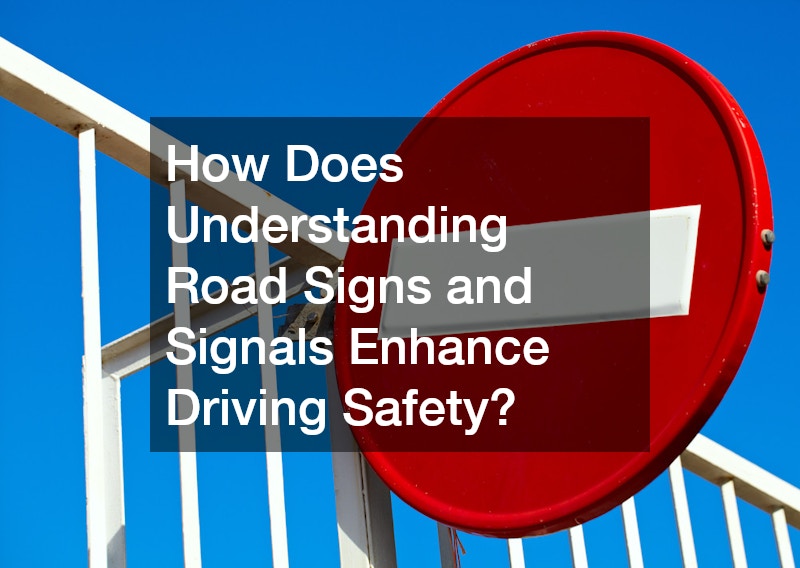
Understanding the importance of vehicle safety is crucial for every driver. In an era where distractions are abundant and road conditions can change rapidly, ensuring your vehicle is in top condition cannot be overstated. This article will address common questions and provide guidance on how to ensure your vehicle is safe to operate, emphasizing the necessity of regular maintenance, awareness of tire conditions, brake performance, and the importance of other essential safety features.
1. Why is Vehicle Maintenance Important to Drive With Caution?
1.1 Regular Check-ups and Their Benefits
Regular vehicle maintenance is your first line of defense against potential breakdowns and accidents. Just like a defensive driving course online teaches you how to react to unpredictable situations, routine check-ups prepare your vehicle for the road. These inspections can identify issues before they become significant problems, saving you money and ensuring your safety.
1.2 Common Maintenance Tasks to Prioritize
Essential maintenance tasks include checking the engine oil, inspecting the brakes, and monitoring fluid levels. Additionally, if you own a truck, consider the condition of your truck bed cover and any hydraulic repairs that may be necessary. For commercial drivers undergoing CDL truck driving training, adherence to maintenance schedules is vital for compliance and safety.
1.3 Effects of Neglecting Vehicle Maintenance
Neglecting vehicle maintenance can lead to disastrous consequences. From brake failures to tire blowouts, the risks are numerous. Such negligence can even increase the likelihood of accidents, for which a DUI attorney could become a necessary contact if the situation escalates. Prioritizing maintenance helps prevent these scenarios and keeps you safe on the road.
2. How Do Tire Conditions Affect Safe Driving?
2.1 Recognizing Signs of Worn-out Tires
Tires are your vehicle’s only contact with the road, making their condition paramount. Look for signs like uneven wear, cracks, or low tread depth. Regularly inspecting your tires can prevent hydroplaning and blowouts, especially under adverse conditions.
2.2 Importance of Proper Tire Inflation
Proper tire inflation is essential for safe driving. Under-inflated tires can reduce fuel efficiency and increase the risk of tire blowouts, while over-inflated tires can lead to decreased traction. Keeping your tires at the recommended pressure not only enhances safety but also prolongs tire life.
2.3 Choosing the Right Tires for Your Vehicle
Selecting the right tires for your vehicle type is crucial. For example, if you frequently drive on rugged terrain, all-terrain tires may be best. Likewise, consider seasonal variations; winter tires provide better grip in icy conditions. Always refer to your vehicle’s manual or consult with a professional when making tire choices.

3. What Role Do Brakes Play in Vehicle Safety?
3.1 Signs of Brake System Wear and Tear
Brakes are a vital component of vehicle safety. Listen for unusual noises, such as grinding or squeaking, and notice any changes in braking performance. If your vehicle pulls to one side when braking or the brake pedal feels spongy, these could be signs of trouble.
3.2 Regular Brake Maintenance Routines
Establishing a regular brake maintenance routine can extend the life of your brake components. This includes inspecting brake pads and rotors, checking fluid levels, and scheduling professional evaluations as needed. Just as you would with a remanufactured valve body, ensure that all parts are functioning optimally.
3.3 Enhancing Brake Performance
To enhance brake performance, consider upgrading to higher-quality parts. If you frequently tow heavy loads, ensuring that your braking system is adequate can be a lifesaver. Whether you’re hauling materials or personal items, an effective braking system is essential for safety.
4. How Does Proper Lighting Contribute to Cautious Driving?
4.1 Importance of Headlights and Taillights
Proper lighting is critical for visibility on the road. Functional headlights and taillights not only help you see but also ensure that others can see you. Regularly check these lights and replace any burnt-out bulbs promptly.
4.2 Avoiding Glare and Ensuring Visibility
Glare can significantly impair visibility, especially at night. Use anti-glare sunglasses during the day, and keep your windshield clean to minimize reflections. Ensuring that your vehicle’s lighting system is functioning correctly can reduce the risk of accidents caused by poor visibility.
4.3 Troubleshooting Common Lighting Issues
Common lighting issues may include dim headlights or malfunctioning turn signals. Regular inspections can help you identify these problems early. If you’re experiencing consistent lighting issues, consulting a professional for thorough electrical diagnostics is wise.
5. What Is the Significance of Fluid Levels in Vehicle Safety?
5.1 Essential Fluids and Their Roles
Several fluids are vital to vehicle operation, including engine oil, coolant, brake fluid, and transmission fluid. Each plays a crucial role in keeping your vehicle running smoothly and safely.
5.2 Checking and Replenishing Fluid Levels
Regularly checking and replenishing these fluids is essential. For example, low brake fluid can significantly impair stopping ability. Creating a routine that includes checking these levels can help prevent mechanical failures.
5.3 Identifying and Addressing Fluid Leaks
If you notice puddles under your vehicle, it’s important to identify the source of the leak. Addressing fluid leaks promptly can save you from costly hydraulic repairs down the line and ensure your vehicle remains safe to operate.

6. Why Are Seatbelts and Airbags Essential for Driving With Caution?
6.1 Proper Usage of Seatbelts
Seatbelts are the simplest and most effective safety devices in your vehicle. Ensure that everyone in your vehicle is buckled up before you hit the road. Educating passengers about the importance of seatbelt use can save lives in the event of an accident.
6.2 Function and Importance of Airbags
Airbags work in conjunction with seatbelts to provide maximum protection during a collision. Understanding how they operate can help you appreciate their importance. Always ensure that your vehicle’s airbag system is functioning correctly to safeguard against injury, and if not, work with trusted manufacturing parts from reliabel brands.
6.3 Addressing Seatbelt and Airbag Faults
If you notice any warning lights related to seatbelt or airbag systems, consult a professional immediately. Ignoring these signals can jeopardize your safety and the safety of your passengers.
7. How Do Weather Conditions Affect Vehicle Operation Safety?
7.1 Preparing Your Vehicle for Different Seasons
Different weather conditions require specific vehicle preparations. Winter tires, windshield washer fluid, and antifreeze are essential in cold weather, while summer maintenance focuses on air conditioning and tire conditions.
7.2 Tips for Driving in Adverse Weather
When driving in rain or snow, reduce your speed and increase your following distance. Use your headlights in low visibility and consider enrolling in a defensive driving course online to learn effective techniques for navigating tricky conditions.
7.3 Importance of Seasonal Vehicle Checks
Seasonal vehicle checks can help you stay ahead of potential issues. Inspecting your vehicle at the start of each season can ensure you’re prepared for whatever the weather throws at you.
8. What Are the Best Practices for Avoiding Distractions While Driving?
8.1 Common Distractions and How to Manage Them
Common distractions include smartphones, in-car entertainment, and conversations with passengers. To avoid these, establish rules about device usage before driving and ensure your vehicle is set up for hands-free communication.
8.2 Implementing Technology Safely
Modern vehicles come equipped with numerous technological features designed to enhance safety. However, it’s important to use these tools responsibly. Familiarize yourself with your vehicle’s technology to ensure it enhances rather than distracts from your driving experience.
8.3 Building Good Driving Habits
Developing good driving habits, such as minimizing multitasking and remaining focused on the road, is vital. By committing to these practices, you can significantly reduce the risk of accidents caused by distraction.

9. How Does Understanding Road Signs and Signals Enhance Driving Safety?
9.1 Common Road Signs and Their Meanings
Understanding road signs is essential for safe driving. Familiarize yourself with common signs, including stop signs, yield signs, and speed limit indicators. This knowledge helps you respond appropriately in various driving situations.
9.2 Interpreting Traffic Lights and Signals
Traffic lights regulate vehicle movement and pedestrian safety. Understanding how to interpret these signals correctly can prevent accidents and ensure smooth traffic flow.
9.3 The Impact of Ignoring Road Signs
Ignoring road signs can have dire consequences. Failing to heed warnings can lead to accidents and legal issues, potentially requiring the services of a DUI attorney if alcohol is involved. Always stay attentive to the rules of the road.
10. How Can Drivers Adapt to Evolving Vehicle Technologies for Safer Driving?
10.1 Overview of Advanced Driver-Assistance Systems
Advanced Driver-Assistance Systems (ADAS) offer features like adaptive cruise control, lane-keeping assist, and automatic emergency braking. Understanding these technologies can help drivers utilize them effectively to enhance safety.
10.2 Using In-car Technology Responsibly
While technology can improve safety, it’s essential to use it responsibly. Familiarize yourself with your vehicle’s safety features and how to operate them without becoming distracted.
10.3 Staying Informed About New Safety Features
As vehicle technology evolves, staying informed about new safety features is crucial. Manufacturers regularly release updates and new systems designed to improve safety; keeping up-to-date can help you make informed decisions about vehicle maintenance and upgrades.
11. How Can Regular Inspections Help Prevent Accidents?
11.1 Importance of Comprehensive Vehicle Inspections
Regular inspections are critical for identifying potential issues before they escalate. A thorough check-up can reveal problems that might not be immediately apparent, such as worn brake pads, leaks in the hydraulic system, or issues with the automatic transmission. By scheduling comprehensive inspections, you ensure that all components of your vehicle are functioning optimally.
11.2 Key Areas to Inspect Regularly
Focus on critical areas such as brakes, tires, lights, and fluid levels during each inspection. Additionally, check the condition of belts and hoses, as these can deteriorate over time and lead to significant issues if not addressed. For truck owners, inspecting your truck bed cover and ensuring it’s secure can prevent cargo damage and enhance safety.
11.3 Benefits of Professional Inspections
While DIY inspections are beneficial, professional evaluations can uncover hidden issues. Mechanics are trained to identify problems that a layperson might miss. They can also provide insight into when certain parts, like a remanufactured valve body, may need replacement, ensuring your vehicle remains safe to drive.

12. What to Do in Case of a Breakdown
12.1 Preparing for Potential Breakdowns
Despite your best efforts in maintenance, breakdowns can happen. Being prepared can make a significant difference. Keep an emergency kit in your vehicle, including a first-aid kit, flashlight, water, and basic tools. Also, ensure you have contact information for a reliable towing service on hand in case of a serious issue.
12.2 Steps to Take When You Experience a Breakdown
If your vehicle breaks down, stay calm. Safely pull over to the side of the road and turn on your hazard lights. If you can, assess the situation. Is it something simple that you can fix, or will you need a towing service? If the vehicle is unsafe to drive, do not hesitate to call for professional help.
12.3 Ensuring Safety During a Breakdown
While waiting for assistance, it’s crucial to prioritize safety. Stay inside your vehicle if it’s in a busy area, and keep your seatbelt fastened. If you need to exit the vehicle, be aware of your surroundings and ensure it’s safe to do so. Understanding these steps can help prevent accidents in precarious situations.
13. The Role of Education in Driving Safety
13.1 Importance of Driver Education Programs
Participating in driver education programs, such as defensive driving courses online, can enhance your driving skills. These programs teach vital techniques for safe driving, including how to handle emergencies and the importance of vehicle maintenance.
13.2 Staying Informed About New Regulations and Practices
The driving landscape is constantly evolving, with new regulations and technologies emerging. Keeping up-to-date with these changes is essential for all drivers. Engage with community workshops or online resources to stay informed about the best practices in vehicle safety.
13.3 The Impact of Continuous Learning
Continuous learning isn’t just for new drivers; even seasoned drivers can benefit from refresher courses. Understanding the latest safety technologies, laws, and maintenance practices helps ensure that all drivers can navigate the roads safely and responsibly. Embracing ongoing education can significantly reduce the risks associated with driving.
Conclusion
Driving with caution is essential for ensuring personal and public safety. Regular vehicle maintenance, awareness of driving conditions, and understanding vehicle technologies play crucial roles in safe vehicle operation. By following the guidance provided in this article, including recognizing the importance of common vehicle parts and features, drivers can significantly enhance their safety on the roads. Whether you’re considering whether to sell junk car or investing in new technology, being proactive about vehicle safety is the key to responsible driving.

